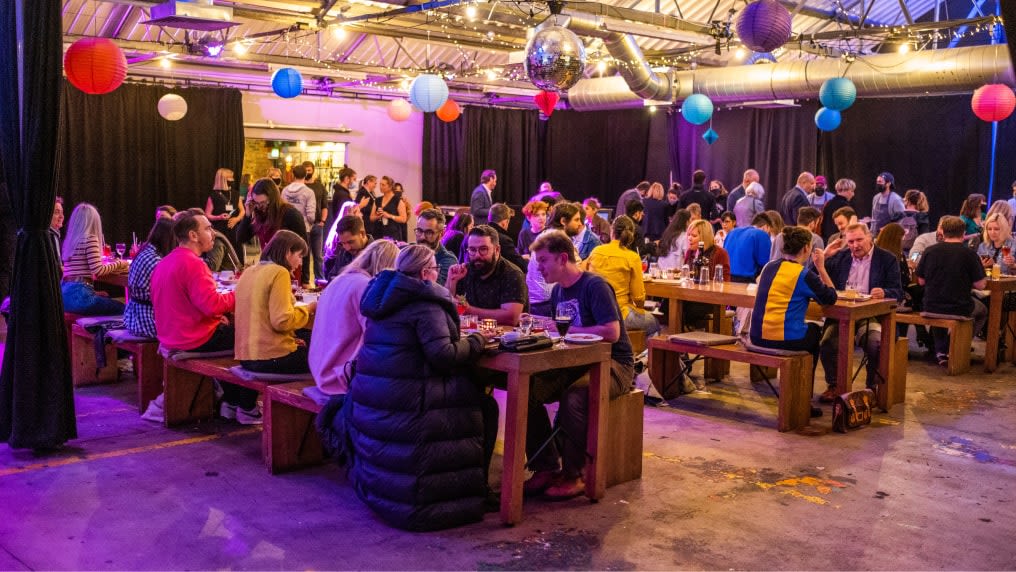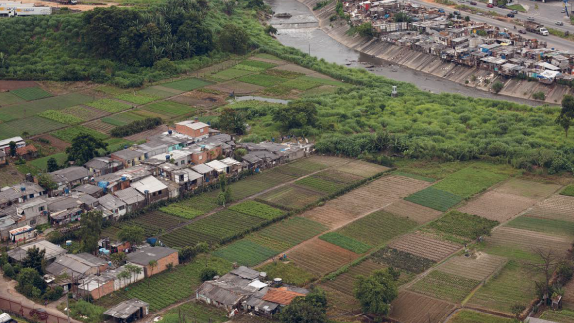In spring 2018, the City of San Francisco passed legislation that all carpets installed in city departments would be at least Cradle to Cradle Certified Silver and must not contain antimicrobials, fluorinated compounds, flame retardant chemicals, or other chemicals of concern. Similar requirements apply to carpet adhesives. Carpet tiles are to be used for ease of replacement and avoidance of waste. Additionally, both the carpet fibres and backing materials must contain minimum amounts of recycled materials, and ultimately be recyclable at end-of-use.
San Francisco led this initiative as part of its drive to reduce the amount of discarded carpets sent to landfill (currently over 80% in the USA), and ensure the well-being of visitors and staff in San Francisco City departments. From the outset it was important to ensure the process not only inspired material and business innovation but also allowed for a competitive bid process. It therefore required extensive research and stakeholder engagement.
Time frame
Research began in summer 2016 and, following a period of consultation, the regulation was passed in Spring 2018.
Focus areas
By focussing on the built environment supply chain, San Francisco was able to work towards meeting environmental and material health goals within city buildings and create new opportunities for suppliers to win city contracts.
Core team & external participants
The development of San Francisco’s ‘green carpet requirements’ was a collaborative effort between: the Department of Environment’s Zero Waste, Toxics Reduction, and Green Building teams, the Municipal Green Building Task Force, an external consultant from HDR (an architectural, engineering and consulting firm), and city staff involved in public procurement.
Finance
The research and execution of the regulation was financed from the Department of Environment’s budget, ultimately derived from city refuse fees, and totalling approximately USD 15,000.
Outcomes to date
The Department of Environment has been in consultation with other city departments to embed the requirements into large projects
An online platform is available to city departments looking to install new flooring and seeking direction on suppliers of compliant products
An informal network of champions from different departments has been identified, and consists of individuals motivated to create change within their area and who can assist with consultations on future product categories, such as furniture and countertops
The journey
Origins
San Francisco’s Environment Code contains ordinances designed to guide city activities to protect citizens, safeguard the environment and preserve natural resources, while also supporting economic activity. City activities are guided by the premise that the choices least harmful to health and environment, based on the most applicable scientific evidence, will take precedence at all times thus preventing costly subsequent interventions and irreversible damage to people and nature. For example:
The Environmentally Preferable Purchasing Ordinance seeks to “reduce negative impacts to human health and the environment through the development of specifications for city purchases”
The Green Building Requirements for City Buildings Ordinance seeks to protect humans and the environment, in addition to contributing to meeting the California Energy Commission goals of Zero Net Energy in all new commercial construction in California by 2030 with a retrofit to Zero Net Energy in 50% of existing commercial buildings
The ‘green carpet’ requirements were developed under the mandate of these two ordinances, under leadership of the San Francisco Department of Environment, with overarching support from the elected mayoral leadership and Board of Supervisors in the city.
Launching
From 2016, the Department of Environment hired an external consultant from HDR Inc. for about a year, to provide advice on carpet constituents in municipal construction projects. HDR Inc is an engineering, architecture, environmental and construction service. Early in the process the City Toxics Reduction team was engaged, alongside other departments to understand where technical adaptations to the carpet criteria may be required. Carpet specifications were then drawn up, with the aim of avoiding chemicals of concern and to include recycled content and maximum recyclabilityrecyclabilityThe ease with which a material can be recycled in practice and at scale. potential.
In the search for suitable products, initially the team sought independent third-party certification or eco-labels that met its objectives. Cradle to Cradle Certified (C2CC) was the closest fit. As one of the schools of thought that underlies the circular economycircular economyA systems solution framework that tackles global challenges like climate change, biodiversity loss, waste, and pollution. It is based on three principles, driven by design: eliminate waste and pollution, circulate products and materials (at their highest value), and regenerate nature., Cradle to Cradle principles promote design that allows for continuous material recovery and reutilisation, and the use of materials and products that are safe for human health and the environment. It considers all materials to be nutrients that can be returned to either a technical or biological system.
To meet its material recovery and health goals the city went further, however, requiring the inclusion of three additional specifications:
Full exclusion of certain chemicals, most notably perfluorinated and polyfluorinated alkyl substances (PFASs)
Inclusion of recycled content
Manufacturers’ material transparency
After draft carpet specifications were agreed upon, a manufacturers’ survey was created to establish achievable standards and identify sufficient compliant products to ensure a competitive bid process, with enough options to meet design needs of city architects and project managers. Ultimately, the team identified three manufacturers who were able to meet the strict requirements.
Reflections
Using the creation and implementation of regulation to open up new opportunities for suppliers and new standards in city procurement and asset management.
Under the Environmentally Preferable Purchasing Ordinance, this regulation is mandatory. Its development has shown that more circular economy specifications are viable and can be used to develop the market and make material recycling and capture-for-reusereuseThe repeated use of a product or component for its intended purpose without significant modification. more common. The support of the legislation by the City and County of San Francisco’s elected mayoral leadership and Board of Supervisors also encourages the development of similar initiatives that support the city’s economic, environmental and social goals.
Collaborating with other city departments and manufactures to secure input, awareness and commitment.
To secure changes in city purchasing practices it was important to work with other departments to ensure that the new standards provide sufficient compliant products to meet city departments’ needs. The Department of Environment holds regular meetings with department purchasers to raise awareness of the ordinances under the Environment Code, whilst also working with the informal champions network to support the implementation of the regulation.
Engaging in robust research to understand product components, material transparency and the potential of standards and certificates.
Identifying compliant products took many months, since the selected requirements extended beyond those of Cradle to Cradle Certified. To support the ongoing assessment of product compliance by city purchasing departments, it is hoped that third-party certifiers will continue to evolve their standards and material transparency in products will increase.
Download the case study, originally published in March 2019:





